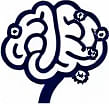Effective Brainstorming Techniques for Idea Generation
 by Marlene Keeling
by Marlene Keeling
Explore practical brainstorming techniques that enhance creative thinking and problem-solving. These methods, rooted in cognitive approaches, help individuals and teams generate innovative ideas for business and personal growth, fostering better decision-making.

Brainstorming serves as a vital tool for fostering creativity and solving problems. It involves structured ways to produce ideas, drawing from cognitive processes that support innovation. In professional settings, these techniques encourage collaboration and fresh perspectives.
The Basics of Brainstorming
Brainstorming begins with gathering a group or working alone to freely generate thoughts. This process relies on simple rules, such as deferring judgment and aiming for quantity over quality. For instance, brainstorming often starts with a clear problem statement to guide the session.
One popular method is the nominal group technique. This approach lets participants work individually before sharing, reducing groupthink and promoting diverse input. By organizing ideas systematically, teams can build on each other's contributions without immediate criticism.
Key Techniques in Action
Several techniques stand out for their effectiveness in various contexts. The SCAMPER method, for example, prompts users to ask questions about existing ideas. It includes steps like substituting elements or modifying aspects to spark new concepts.
Another technique is mind mapping. This visual method involves creating diagrams that branch out from a central idea. Mind mapping helps in organizing complex thoughts and identifying connections that might otherwise be overlooked.
In business environments, the Six Thinking Hats technique offers a structured way to explore ideas. Each "hat" represents a different mode of thinking, such as emotional or analytical. This method ensures that discussions cover multiple angles, leading to more balanced outcomes.
Applications in Psychology and Business
These techniques have roots in psychological theories of cognition. They align with ways the brain processes information, encouraging neural pathways that enhance learning. For professionals, applying brainstorming techniques can lead to better strategies and improved team dynamics.
In psychology, such methods support cognitive development by challenging habitual thinking patterns. Regular practice can strengthen mental flexibility, which is essential for lifelong learners. For example, using these approaches in educational settings helps students tackle assignments with greater creativity.
Business leaders often use brainstorming to address challenges like product development. By incorporating these techniques, companies can innovate more effectively and stay competitive. A case in point is how tech firms use rapid idea sessions to refine prototypes.
Practical Tips for Implementation
To get started, select a technique that fits the goal. Begin with a warm-up activity to stimulate creativity, such as quick freewriting. Keep sessions timed and focused to maintain energy.
For teams, ensure everyone participates equally. This might involve rotating roles or using tools like sticky notes for idea collection. Individuals can adapt these methods for personal use, such as journaling to track progress.
Over time, combining techniques can yield even better results. For instance, pairing mind mapping with SCAMPER allows for both visual and interrogative exploration. The key is consistent application to build confidence and refine skills.
Benefits for Cognitive Growth
Engaging in these practices offers long-term advantages. They promote critical thinking and adaptability, core elements of cognitive development. Professionals who regularly brainstorm report higher satisfaction in their roles due to increased problem-solving abilities.
From a psychological view, these techniques encourage divergent thinking, which expands mental capabilities. This growth extends to everyday life, helping with decisions like career planning or personal projects.
In summary, integrating idea generation methods into daily routines can transform how we approach challenges. These tools are accessible and adaptable, making them ideal for anyone seeking to enhance their cognitive toolkit.
Real-World Examples
Consider how a marketing team might use brainstorming to launch a campaign. They could employ the Six Thinking Hats to evaluate ideas from different viewpoints, ensuring comprehensive coverage.
Similarly, in education, teachers use these techniques to engage students. By facilitating group activities, they foster an environment where creative thinking thrives, leading to deeper learning experiences.
Ultimately, the value of these techniques lies in their versatility. Whether in a boardroom or at home, they provide a foundation for ongoing innovation and personal advancement.
